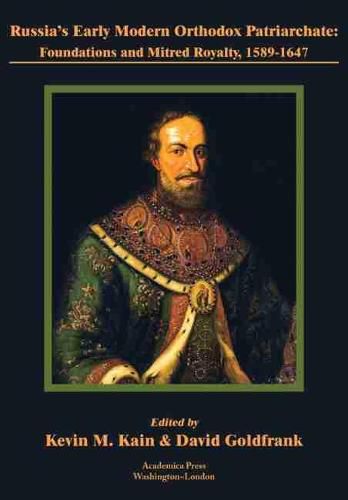Readings Newsletter
Become a Readings Member to make your shopping experience even easier.
Sign in or sign up for free!
You’re not far away from qualifying for FREE standard shipping within Australia
You’ve qualified for FREE standard shipping within Australia
The cart is loading…






This title is printed to order. This book may have been self-published. If so, we cannot guarantee the quality of the content. In the main most books will have gone through the editing process however some may not. We therefore suggest that you be aware of this before ordering this book. If in doubt check either the author or publisher’s details as we are unable to accept any returns unless they are faulty. Please contact us if you have any questions.
Focusing on one of Russia’s most powerful and wide-reaching institutions in a period of shattering dynastic crisis and immense territorial and administrative expansion, this book addresses manifestations of religious thought, practice, and artifacts revealing the permeability of political boundaries and fluid transfers of ideas, texts, people, objects, and sacred spaces with the rest of the Christian world. The historical background to the establishment Russia’s Patriarchate, its chief religious authority, in various eparchies from Late Antiquity sets the stage. The Tale of the Establishment of the Patriarchate, crucial for legitimizing and promoting both this institution and close cooperation with the established tetrarchy of Eastern Orthodox patriarchs emerged in the 1620s. Their attitude remained mixed, however, with persisting unease concerning Russian pretensions to equality. Regarding the most crucial other for Christianity’s self-identification, the contradictions inherent in Christianity’s appropriation of the Old Testament became apparent in, for example, the realm’s imperfectly enforced ban on resident Jews. The concept of ordained royalty emerged in the purported co-rulership of the initial Romanov Tsar Michael and his father, Patriarch Filaret. As a pertinent foil to Moscow’s patriarchs, challenges arose from Petro Mohyla, a metropolitan of the then totally separate Kievan church, whose Academy became the most important educational institution for the Russian Orthodox Church into the eighteenth century, combining a Romanian regal, Polish aristocratic, and Ukrainian Orthodox self-identity.
$9.00 standard shipping within Australia
FREE standard shipping within Australia for orders over $100.00
Express & International shipping calculated at checkout
This title is printed to order. This book may have been self-published. If so, we cannot guarantee the quality of the content. In the main most books will have gone through the editing process however some may not. We therefore suggest that you be aware of this before ordering this book. If in doubt check either the author or publisher’s details as we are unable to accept any returns unless they are faulty. Please contact us if you have any questions.
Focusing on one of Russia’s most powerful and wide-reaching institutions in a period of shattering dynastic crisis and immense territorial and administrative expansion, this book addresses manifestations of religious thought, practice, and artifacts revealing the permeability of political boundaries and fluid transfers of ideas, texts, people, objects, and sacred spaces with the rest of the Christian world. The historical background to the establishment Russia’s Patriarchate, its chief religious authority, in various eparchies from Late Antiquity sets the stage. The Tale of the Establishment of the Patriarchate, crucial for legitimizing and promoting both this institution and close cooperation with the established tetrarchy of Eastern Orthodox patriarchs emerged in the 1620s. Their attitude remained mixed, however, with persisting unease concerning Russian pretensions to equality. Regarding the most crucial other for Christianity’s self-identification, the contradictions inherent in Christianity’s appropriation of the Old Testament became apparent in, for example, the realm’s imperfectly enforced ban on resident Jews. The concept of ordained royalty emerged in the purported co-rulership of the initial Romanov Tsar Michael and his father, Patriarch Filaret. As a pertinent foil to Moscow’s patriarchs, challenges arose from Petro Mohyla, a metropolitan of the then totally separate Kievan church, whose Academy became the most important educational institution for the Russian Orthodox Church into the eighteenth century, combining a Romanian regal, Polish aristocratic, and Ukrainian Orthodox self-identity.